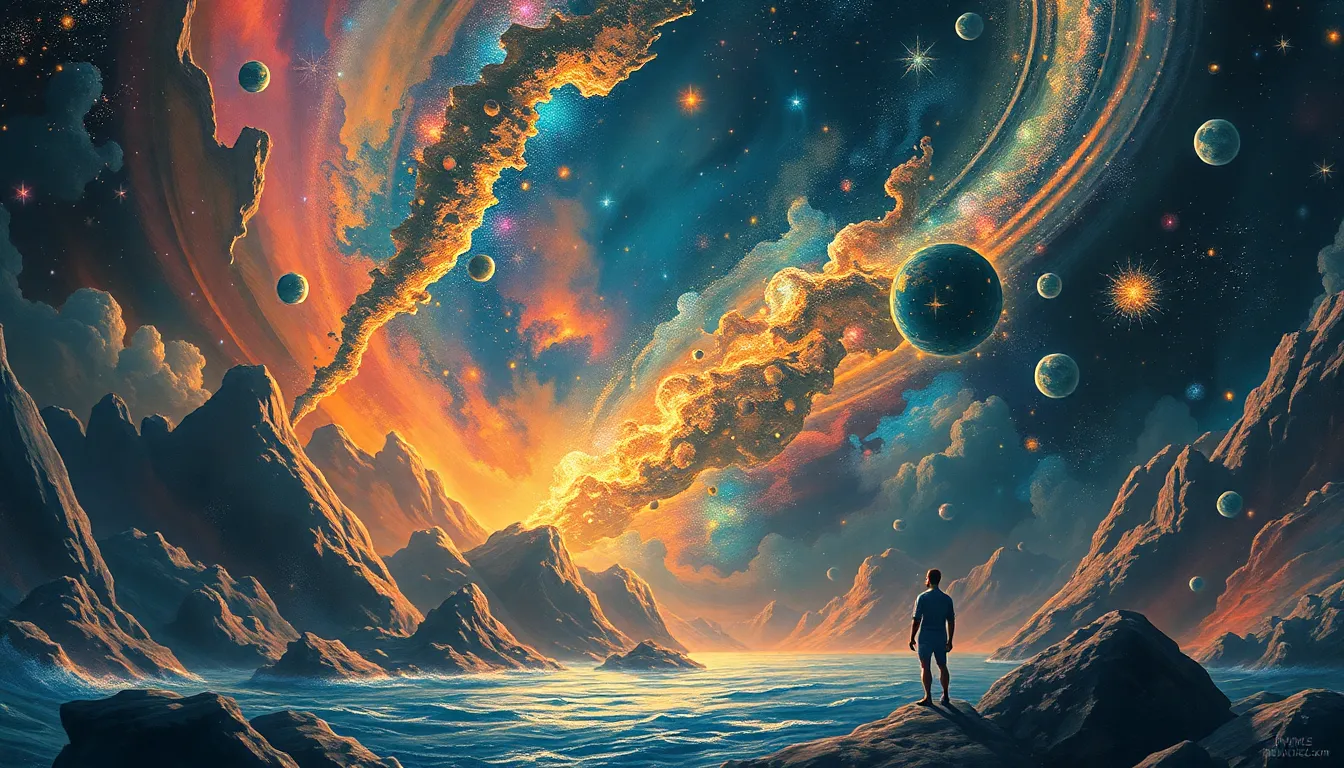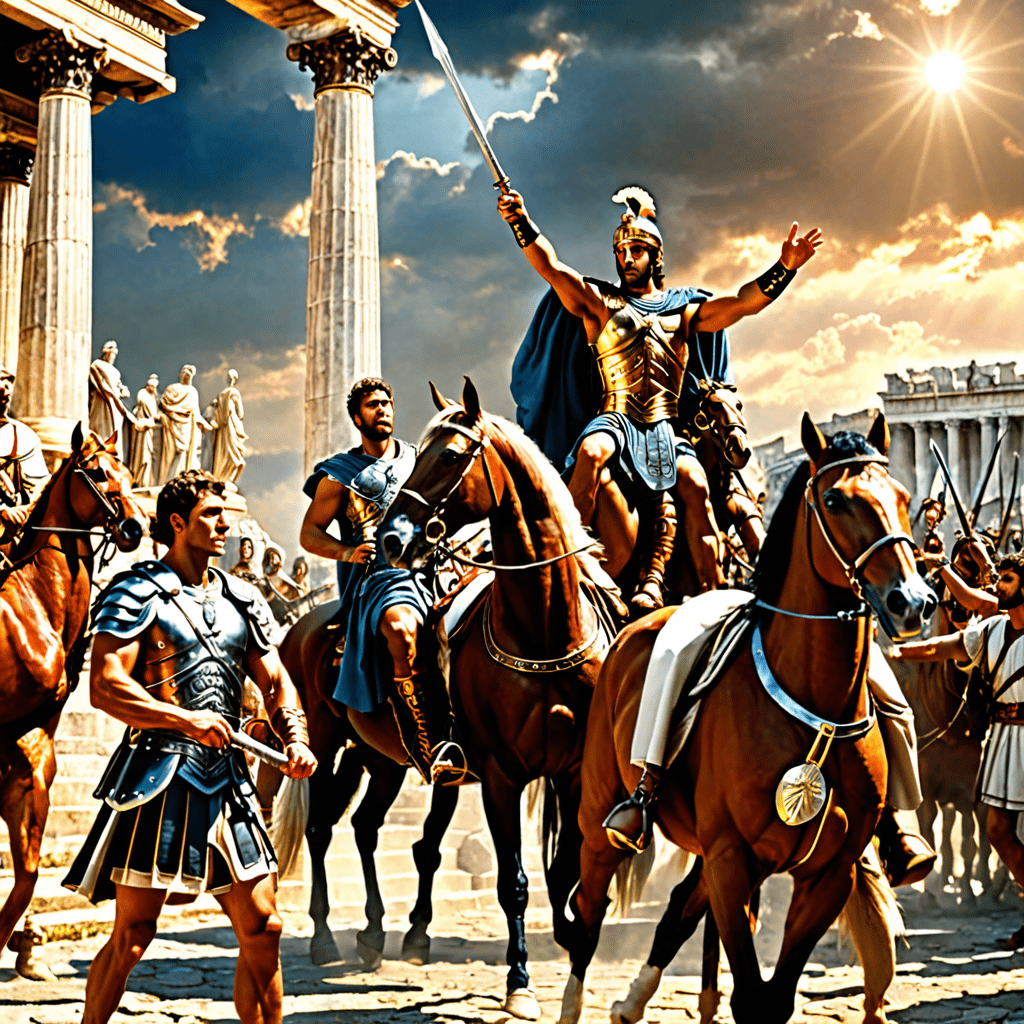The Cosmic Canvas: Painting the Picture of Creation Through Myths
Introduction to the Cosmic Canvas
The term “cosmic canvas” serves as a powerful metaphor for the ways in which various cultures have depicted the creation of the universe and humanity. Just as an artist uses a canvas to express their vision, myths serve as a narrative canvas for civilizations to articulate their understanding of existence. These ancient stories encapsulate humanity’s quest for meaning, providing insights into our origins and our place within the cosmos.
Understanding myths is crucial for grasping the complexities of human origins and the universe. They not only reveal cultural values and beliefs but also reflect the universal questions that have intrigued humanity throughout history. This article aims to explore the intricate tapestry of creation myths from around the world, their roles in human culture, and their relevance in contemporary society.
The Role of Myths in Human Culture
Myths have played a pivotal role in shaping human culture throughout history. Across civilizations, these narratives have served several essential functions:
- Explanations: Myths often provide explanations for natural phenomena, human existence, and the workings of the universe.
- Traditions: They preserve traditions and customs, offering a sense of identity and continuity.
- Moral Lessons: Many myths convey moral lessons, guiding individuals on ethical behavior and societal norms.
Creation myths, in particular, share universal themes such as chaos and order, life and death, and the relationship between humanity and the divine. These enduring themes resonate across cultures, illustrating the shared human experience.
Creation Myths: A Comparative Analysis
Creation myths vary significantly across cultures, yet they often share striking similarities. For instance:
- Genesis (Judeo-Christian): Describes a divine creation in six days, culminating in the formation of humanity.
- Hindu Cosmology: Portrays a cyclical process of creation and destruction, with deities like Brahma as the creator.
- The Big Bang Theory: A scientific explanation that describes the universe’s origin through a massive explosion.
While Genesis emphasizes a linear creation narrative, Hindu cosmology embraces cyclical time. The Big Bang Theory focuses on scientific inquiry. Despite these differences, common motifs such as the serpent, chaos, and the quest for harmony often appear in these stories, reflecting humanity’s struggle to understand the cosmos.
Indigenous Perspectives on Creation
Indigenous cultures offer rich and diverse creation myths that are deeply intertwined with nature. These stories often emphasize the interconnectedness of all living beings and the environment. For example:
- Native American Myths: Many Native American tribes view creation as a collaborative process between humans and the natural world, with stories of the Earth being formed from the body of a giant turtle.
- Aboriginal Australian Myths: The Dreamtime encompasses a complex web of creation stories that illustrate the spiritual connection between people and the land.
Oral tradition plays a crucial role in preserving these myths, allowing them to evolve over time while maintaining their core messages. Storytelling serves as a means of passing down knowledge, history, and cultural identity.
The Cosmic Drama: Gods and Creators
Creation myths often feature a pantheon of deities and creator figures, each with distinct characteristics and roles. These divine beings are frequently anthropomorphized, reflecting human traits and emotions. Notable examples include:
- Prometheus: In Greek mythology, Prometheus defies the gods by stealing fire for humanity, symbolizing the quest for knowledge.
- Vishnu: In Hinduism, Vishnu plays a vital role in preserving the universe, embodying the principle of cosmic order.
Through these figures, creation myths explore themes of sacrifice, creativity, and the complexities of divine intervention in human affairs.
Science and Myth: Bridging the Gap
Modern science often intersects with ancient myths, leading to fascinating parallels and contrasts. The Big Bang Theory, for instance, offers a scientific explanation for the universe’s origin, while creation myths provide philosophical and spiritual interpretations. Key points of intersection include:
- Cosmic Origins: Both scientific and mythological narratives seek to answer fundamental questions about existence.
- Metaphorical Language: Myths often use metaphorical language to convey complex ideas, much like scientific theories do.
While the two may seem disparate, they can complement each other in enriching our understanding of the universe and our place within it.
Symbolism and Imagery in Creation Myths
Creation myths are rich in symbolism and imagery, with common symbols like light, water, and darkness carrying profound meanings. Some examples include:
- Light: Often symbolizes knowledge, enlightenment, and the birth of the cosmos.
- Water: Represents the source of life and the primordial chaos from which creation emerges.
- Darkness: Frequently symbolizes the unknown or chaos before creation.
Artistic representations of these myths can be found in cave paintings, sculptures, and literature across cultures. The impact of visual art on the interpretation of myths deepens our understanding of their significance.
The Evolution of Creation Myths in Contemporary Society
Creation myths continue to evolve, reflecting contemporary societal values and beliefs. Modern interpretations often address current issues such as:
- Environmental Concerns: Many contemporary retellings emphasize the importance of nature and ecological balance.
- Technological Influence: The rise of technology has led to new myth-making, with stories often incorporating elements of science fiction.
The resurgence of interest in mythology can be seen in popular culture, from films and literature to art, as creators draw upon ancient narratives to explore modern themes.
Lessons from Creation Myths for Modern Existence
Creation myths offer valuable insights applicable to contemporary life. They encourage us to reflect on existential questions and challenges, such as:
- Identity: Myths help us explore our sense of self and connection to the universe.
- Ethics: Many creation stories provide moral guidance, prompting us to consider our responsibilities to others and the environment.
Engaging with these ancient narratives fosters a dialogue between ancient wisdom and modern understanding, enriching our lives and perspectives.
Conclusion: The Enduring Power of Myths
Creation myths, as illustrated through diverse narratives across cultures, reveal the profound ways in which humanity grapples with the mysteries of existence. The cosmic canvas painted by these myths continues to inspire and resonate, offering insights into our origins, values, and interconnectedness with the universe. As we navigate an ever-changing world, the lessons embedded in these timeless stories remain relevant, reminding us of the enduring power of myths in shaping our understanding of life and existence.



